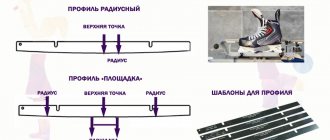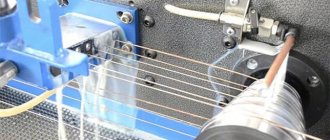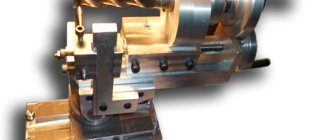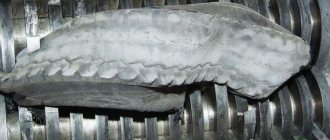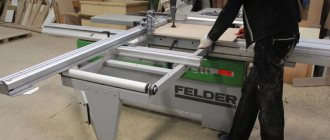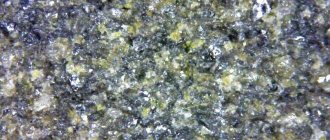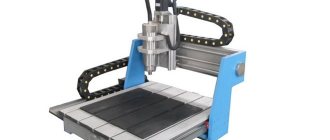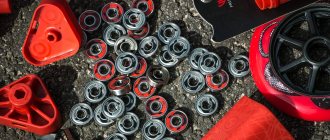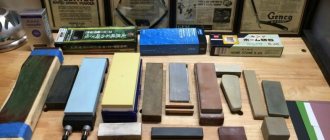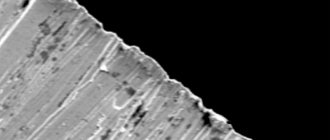How to sharpen skates at home
- Preparing skates for sharpening
- Types of skate sharpening
- How to check the sharpening of skates
Ice skating is a popular and accessible sport that allows you to get great pleasure. As in any other sport, much in this case depends on the quality and condition of the equipment. The main “tool” of athletes who engage in hockey or figure skating is skates, which means it is necessary to monitor their condition especially carefully.
However, this applies not only to professionals, but also to amateurs who visit the skating rink in their free time. The sharpness of skate blades must be checked periodically and sharpened in a timely manner. Let's look at how you can sharpen skates with your own hands.
Cost of materials for devices
There are many models of skate sharpening machines on the market. Bosch and ProSharp devices are in demand. Such devices are suitable for sharpening figure skates and hockey skates. The devices ensure uniform movement of the carriage and are characterized by precise sharpening of the grooves. Their capabilities are wide. Using the units, it is possible to sharpen blades with automatic rotation. The price of the machines ranges from 79-125 thousand rubles.
The cost of the cheapest sharpening disc is 1650 rubles. The most expensive is estimated at 15 thousand rubles.
The cost of other materials is:
- diamond pencil - 3900-7000,
- device that controls the height of the blade ribs - 4100,
- straightening device - 10560,
- sharpening wax - 2700,
- sharpening oil - 1700.
How to sharpen skates correctly: is it accessible to everyone?
Many people who buy new skates make the same common mistake. They are sure that in this case, sharpening them is not necessary. A new product does not mean it is perfect for you, because the contours of the blades that come by default from the factory are not for everyone. It’s even better to say it differently: they will suit just a few.
Fortunately, no one is stopping us from making what we need from the blade profile ourselves.
One of the questions that amateurs or beginners ask is why do you need to sharpen your skates at all? There are several reasons for this:
- You get more pleasure from driving on ice and feel more confident;
- With a well-sharpened blade, the balance is better controlled;
- It is much easier to carry out accelerations and other maneuvers, for example, rotations;
- And, of course, sliding. It's better.
When buying skates, forget that leather skates supposedly have better quality blades than other types. It is a myth.
Common Mistakes
To ensure a successful track hockey experience, it is important to avoid common mistakes when sharpening your blade. When processing metal at home, the following problems arise:
- different sharpening of the inner and outer surfaces of the blade, which leads to imbalance and loss of the ability to maintain balance;
- removing different amounts of steel, which accelerates wear of the product and rapid overheating;
- non-compliance with the contour and radius of the blade, which leads to a decrease in balance.
A mistake for hockey players and figure skaters would be skating on skates that are not sharpened. This accelerates the wear and tear of sports equipment and increases the risk of injury. The training process will not be enjoyable.
When riding for beginners, the sharpening should be adjusted. At first, the ability to stay on ice is not so high, and due to weak adhesion to ice, the risk of falling increases.
Although sharpening skates yourself can be successful, if you don’t have the skill, it’s better not to take risks. Professionals will provide this service for little money. Then skiing will be enjoyable and safe, and your sports equipment will last a long time!
Preparation for sharpening
When figuring out how to sharpen skates at home, you should remember five rules:
- For turning, only the recommended tool is used, which must be harder than the steel from which the runners are made;
- The planes of the blade (ribs) after turning should be of uniform thickness;
- We must try to preserve or restore the original configuration of the blade;
- The sole of the blade is sharpened at right angles to the ribs.
There is an opinion that the second and all subsequent sharpening of the runners consists precisely in restoring the original dimensions of the groove.
How to properly sharpen skates at home - two simple ways
Ice skating is one of the most popular sports. However, over time, ride comfort can decrease significantly. This is due to the blade losing its original shape. The only way out is to sharpen it. If there is no desire (or opportunity) to contact a specialized service, you can do this work yourself.
A little about the specifics of sharpening
The main mistake beginners make is trying to make the blade as sharp as possible. This will lead to loss of stability and, as a result, possible injury. If you look closely at the end of the blade, you can see a groove. It actually forms 2 planes of contact with the ice surface. Under the influence of friction, the ice melts, forming a layer of water. It is this that promotes better gliding.
Skate Blade Configuration
The basic rules for sharpening skates at home are as follows.
- After its completion, the blade configuration should be as close as possible to the original factory one.
- No burrs or uneven thickness on each plane of the blade.
- Availability of appropriate tools.
For reference, the depth of a figure skating groove is about 5-6 mm. This promotes better maneuverability, but affects stability. The deeper the groove, the easier it is to stay on the skates. For hockey models this parameter is usually 20 mm. Speed skating has the deepest groove - up to 45 mm.
Methods
Sharpening the blade is reduced to restoring the original dimensions of the groove. To do this, you can use a hand or electric tool. In case of infrequent use of skates, you can limit yourself to a simple file mounted on a wooden block. But if skiing occurs frequently or there are several lovers of this winter sport in the house, it is recommended to use a power tool.
Needle file
The main tools you will need are a vice, a file (round) of the appropriate diameter and a wooden block. The latter has a U-shape, into the groove of which a needle file is attached.
After securing the skate in a vice, you need to perform the following steps.
- A block with a file is placed on the front part of the blade and the contours of the groove are outlined using a reverse movement. If sharpening has not been carried out for a long time, then the groove may be completely absent.
- Having outlined the depth line, compare the sizes of future ribs. They must be completely identical in thickness.
- With great effort, the recess is deepened until the desired value is reached.
The final stage is removing the burrs. This can be done using a fine-grained file or a flat file.
Grinding wheel
A grinding wheel is attached to a fixed grinder or drill, the thickness of which should be 0.5-1 mm less than the width of the groove. The ridge should be secured with clamps to a steel angle. Attention - its height must be adjusted.
Sharpening with a power tool
The contours of the recess are then manually drawn. Sharpening is done from the front of the blade. Thus, even if there are undetected burrs, they will not greatly affect the quality of sliding.
Currently reading:
Combined profiling method
The blade of a hockey skate can be divided into three working zones: toe, middle, heel. Each zone is responsible for performing its own maneuver (turn, turn, slide).
The essence of the method. Each part of the blade has its own spot of contact with the ice. After profiling, a blade with a complex configuration is obtained. Sharpening is carried out only on specialized machines using templates. This method is popular among professional players.
Detroit Templates
A dual sharpening style for ice hockey skates like the Detroit 1 (10-20ft) provides the player with the most stability on the ice. At the same time, speed and maneuverability are slightly reduced.
For goalies, players who skate a lot with their backs forward, and heavy defensive players, the Detroit 2 (13-26 feet) is suitable.
Zuperior Templates
The triple type of sharpening is used to increase balance, speed, and maneuverability.
There are several Zuperior templates:
- S (6-12-26 ft) - skate blade size 24.6 cm; 25.4 cm; 26.3 cm;
- M (6-13-26 ft) - 27.2 cm; 28 cm; 28.8 cm;
- L (6-14-26 ft) -29.6 cm; 30.6 cm; 31.2 cm.
- V (6-17-26 feet) -29.6 cm; 30.6 cm; 31.2 cm - used for goalkeepers and heavy players.
All templates give athletes additional stability during the game, which does not affect speed.
How to properly sharpen skates using a machine?
To make the process as simple and fast as possible, you should use special equipment. Before sharpening your skates at home, buy a special machine in which you will have to remove the horizontal stop, because it will only get in the way. It is best if the unit is equipped with a vertical guide, which should be fixed at a distance of 2 cm from the edge of the disk.
Naturally, you can immediately buy a machine that is ideal for sharpening skates. Otherwise, you will have to slightly modify your device. Now let's start actually sharpening. To do this, the heel end of the skate must be placed down towards the guide. Now the blade should be slightly pressed against the rotating disk at the desired angle. Next, you need to slowly move the skate down. Try not to press the skate too hard against the abrasive wheel, as you can easily burn it out.
Try to perform all actions carefully: wear safety glasses and protective clothing, and work with gloves. Hold the skate tightly so that it does not fly out of your hands. Please note that the circle must rotate away from you, otherwise sparks will fly straight into your eyes! After using the machine, you will have to do a little manual work: run an abrasive stone along the blade to remove burrs or scratches from the metal surface. Now you know how to properly sharpen your skates. Good luck!
To begin with, it should be noted that skates are often sold unpointed. This is done so that everyone can then tailor them to suit themselves and their needs. The first time this is done quite quickly using special equipment, which does not make sense to use every time. In the future, the blades can be processed at home using sandpaper or a file. The frequency of this procedure will depend on the frequency of their use, for example, professional athletes do this before each workout, and ordinary amateurs do it only a few times a year.
Necessary elements for sharpening
To ensure high-quality sharpening and to ensure that the device does not fail during the first start-up, you must use:
- 2 aluminum or brass pipes with a diameter of 25 mm (one with an internal diameter of 25 mm, the other with the same external diameter);
- whetstone 25 mm;
- M6 mounting bolts;
- drill;
- bench vice;
- flat file;
- hacksaw for cutting metal;
- metal ruler;
- abrasive grinding wheel;
- diamond pencil.
The abrasive wheel and diamond pencil are consumables. What circles are skates sharpened with? For a particular machine, a suitable abrasive grinding wheel is selected. They come in three types depending on hardness:
- soft-hard;
- medium hard;
- solid.
Skate discs come in 3 colors: white, blue, pink. The color of the circle is not decisive. There are 6 main parameters that matter when choosing:
- disk hardness;
- grain size (coarse or fine);
- size;
- compliance of the circle with the fastening parameters of the machine;
- price;
- grinding wheel color.
The function of diamond pencils is reduced to straightening abrasive discs. A single material has its own parameters:
- durability;
- length;
- diameter.
Tilt Features
It is commonly understood as the angle formed between the ice and the blade. This approach ensures the balance of the body of the person who is on the skating rink. There are certain recommendations regarding choosing the appropriate size:
- if the blade is tilted back, the body is in the wrong position, there is no possibility of balancing;
- An excessively large slope is optimal when there is a load on the toe part.
Tilt measurement is traditionally done in degrees or millimeters.
Why you need to learn how to sharpen skates
The condition of the blades will determine how you slide on the ice, whether you can accelerate, brake at the right moment, and perform some elements. If you learn how to sharpen skates at home, you will be able to carry out this procedure at any time convenient for you, while saving money. The first sign of the need for the procedure will be a loss of speed, a feeling of slipping or problems with braking. Pay attention to any damage to the surface of the blades before sharpening your skates at home. If your skates are missing a groove, you will need to become thoroughly familiar with how to sharpen your skates and do so regularly. If you have any difficulties with how to sharpen skates at home, video lessons will help answer all your questions.
Finishing after the sharpening procedure: principles and rules
Below we described how to sharpen skates at home. Once the rough work is done, all that remains is finishing. To do this you will need additional tools:
- abrasive block;
- polishing stone;
- finishing stone.
The bar destroys all burrs and particles of removed metal. Now the blade is ground with stones at the desired angle until the required inclination is achieved. Do not forget that the blades on a pair of skates must be sharpened exactly the same. You can check the uniformity by running a piece of plastic over different surfaces of the blade - if the grooves remain the same, then the sharpening was successful.
